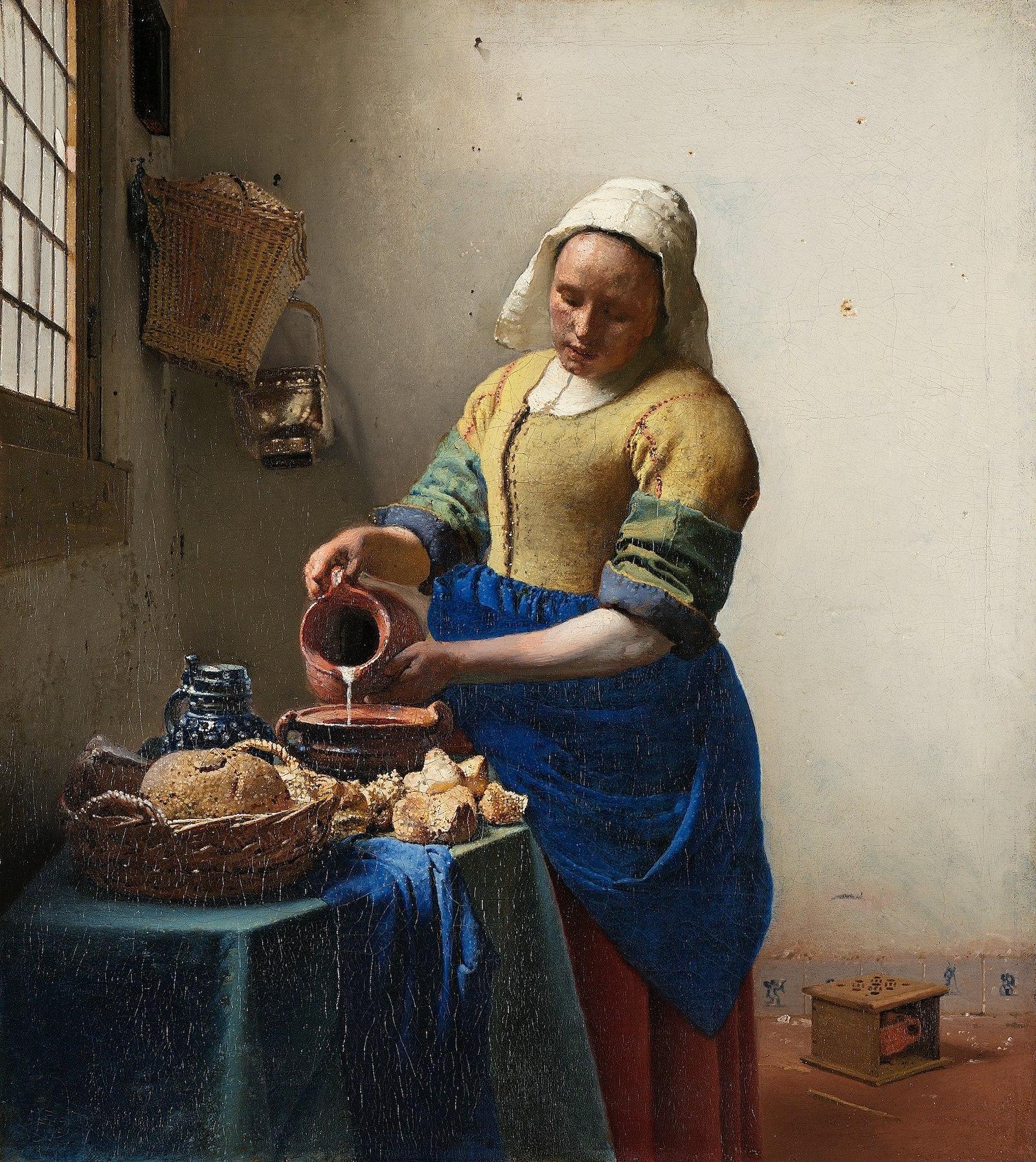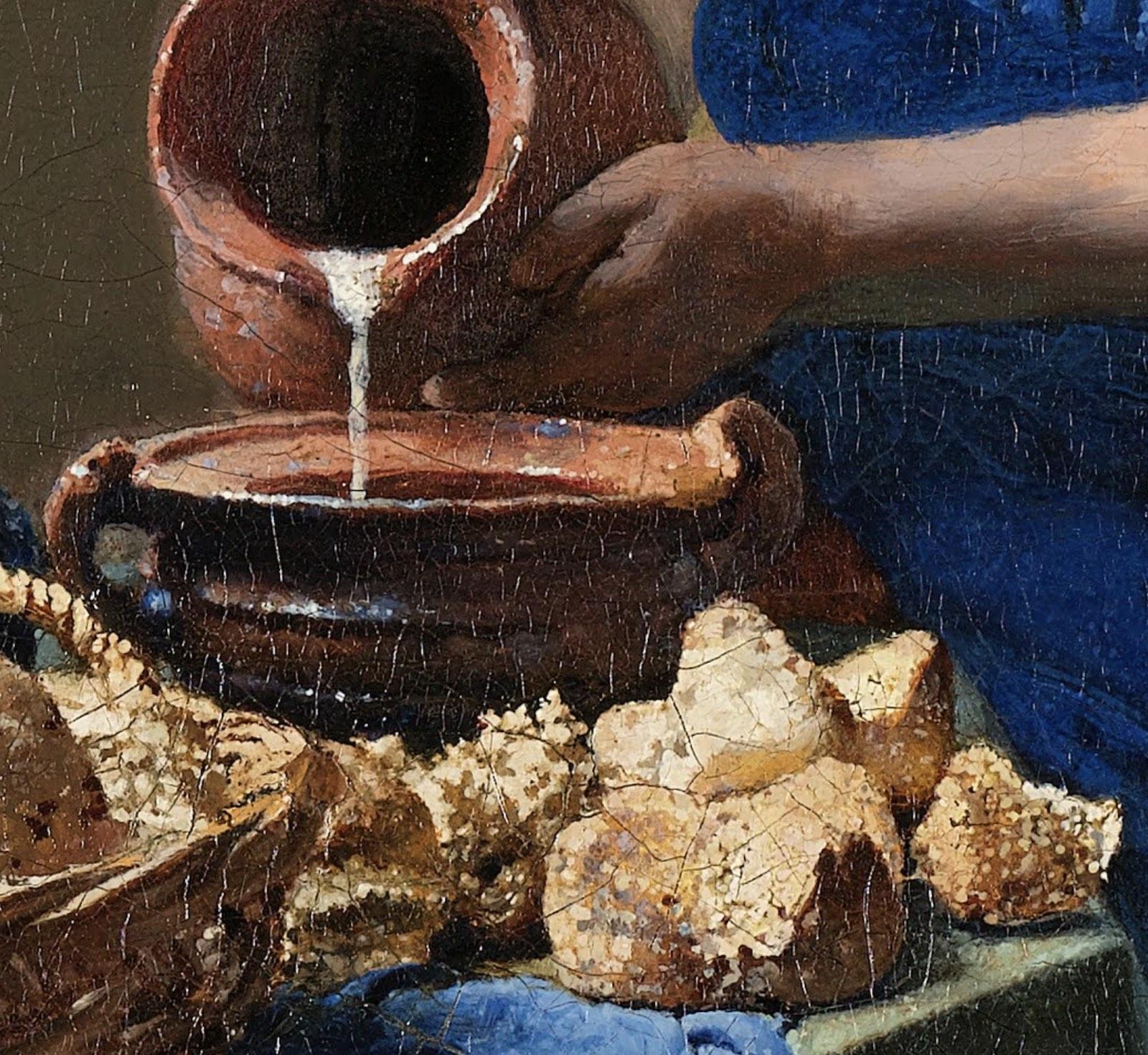Vermeer’s family owned an inn called the Mechelen and his father Reijnier Janszoon worked as an art dealer. Upon the death of his father in 1652, the artist inherited both businesses. While little is known regarding precisely when and why Vermeer decided to pursue painting, it is evident that he had already done so before his father's death. It is possible that his artistic journey began abroad as his name is absent from the Delft archives in the late 1640s and early 1650s. By the end of 1653, his name appearsed in the registry of the Delft Guild of Saint Luke, where he was recorded as a 'master painter.'
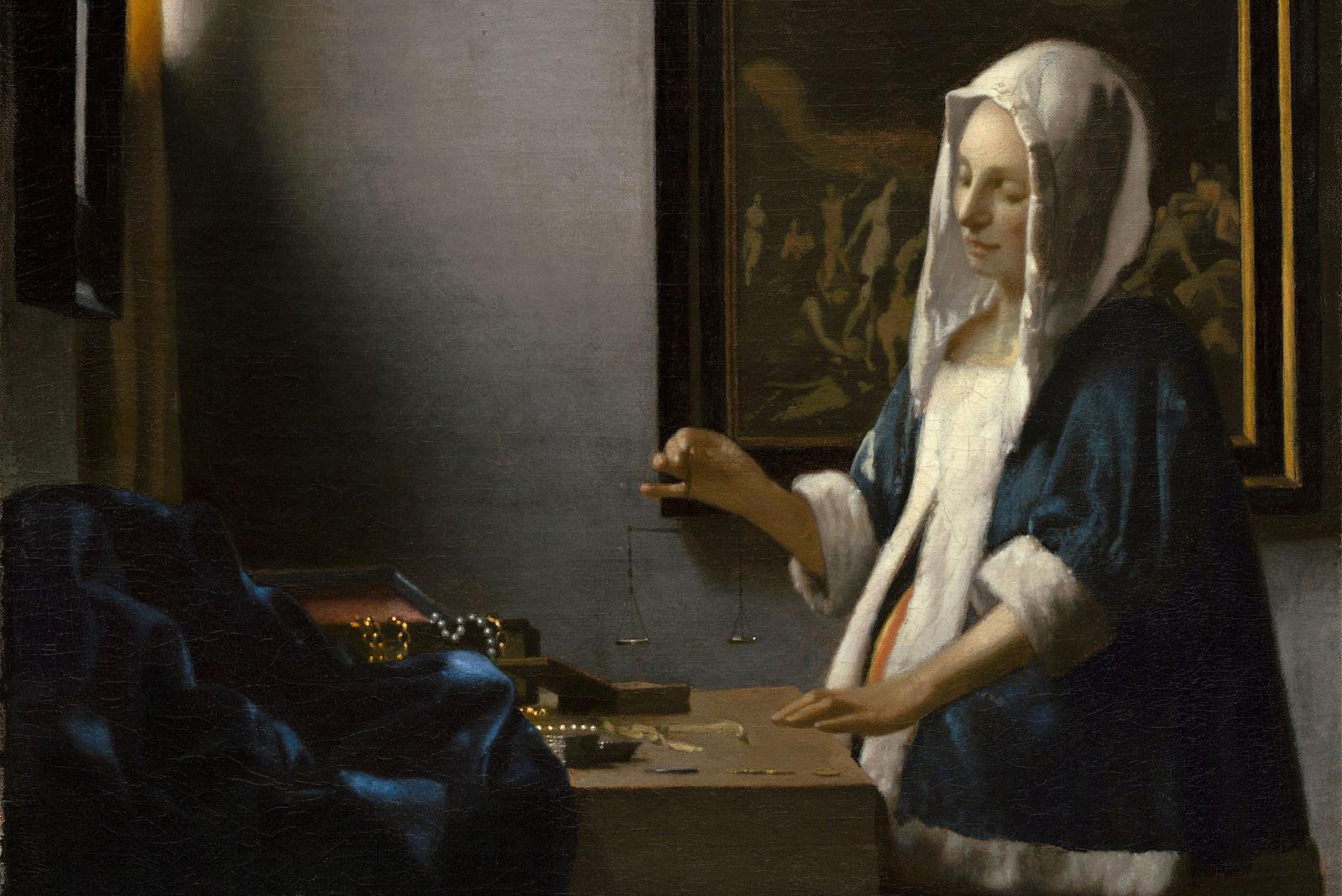
Johannes Vermeer, detail of Woman Holding a Balance, c. 1664. National Gallery of Art, Washington D.C.
Johannes Vermeer, born in October 1632, grew up and spent most of his life in the Netherlandish city of Delft. Though his name faded after his death in 1675, his work was ‘rediscovered’ in the nineteenth century and has remained popular ever since.
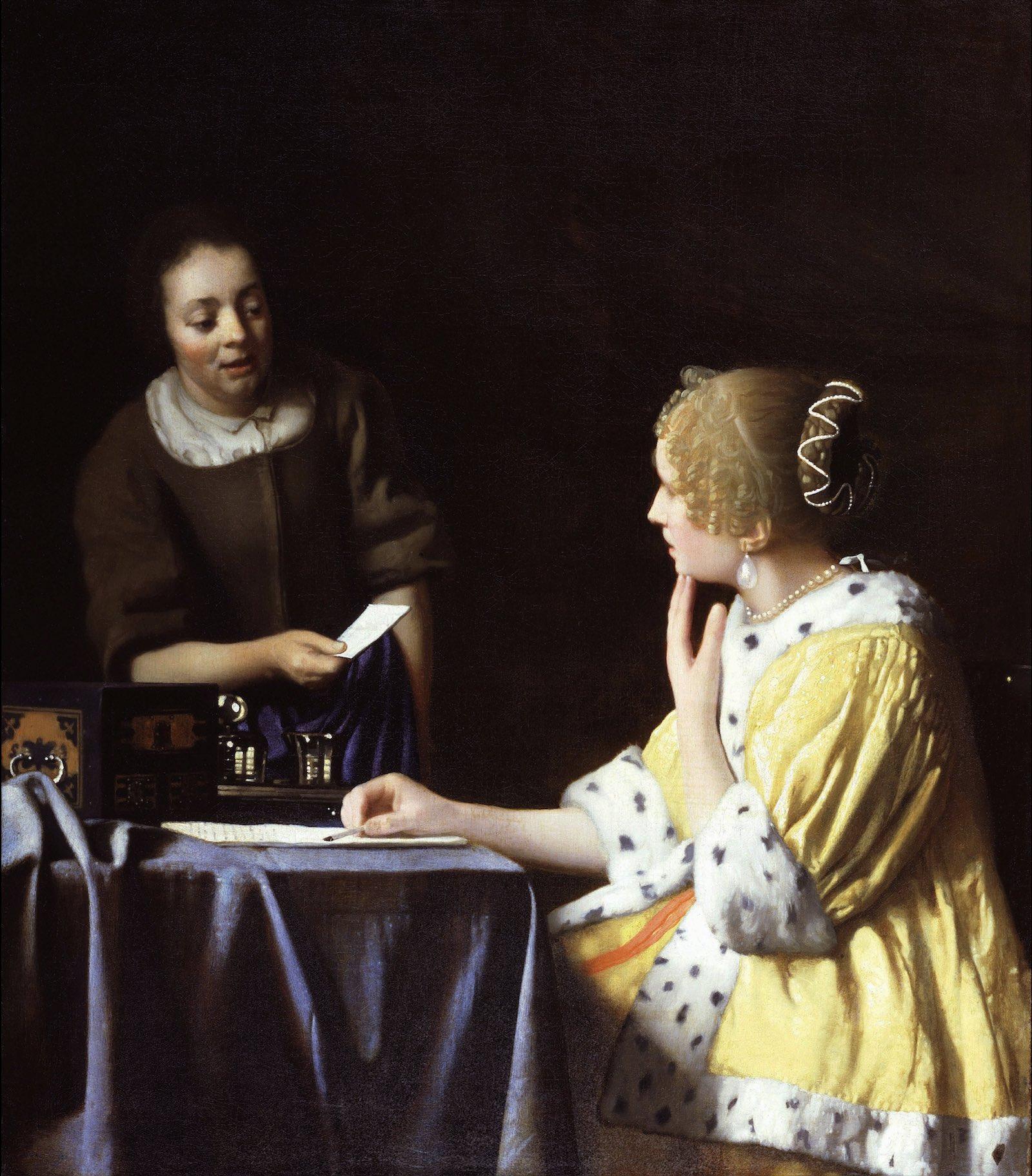
Johannes Vermeer, Mistress and Maid, c. 1666-67. The Frick Collection.
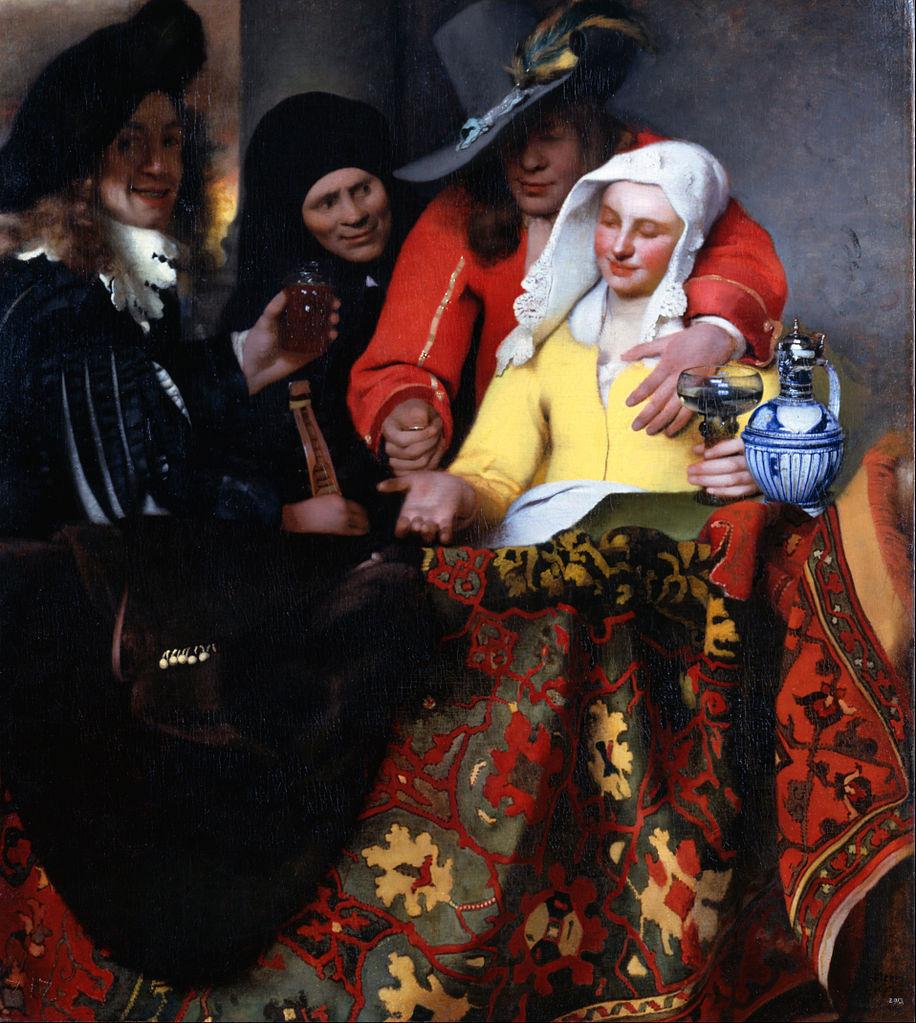
Johannes Vermeer, The Procuress, 1656. Gemäldegalerie Alte Meister (Old Masters Gallery), Dresden, Germany.
As a Dutch artist, it is likely that Vermeer encountered fellow artists immersed in the visual traditions of Caravaggio in Utrecht and Rembrandt in Amsterdam. Both visual traditions certainly manifest in a unique blend throughout the artist's oeuvre and, perhaps most obviously, in the 1656 painting The Procuress. The artwork's subject was likely pulled from a Utrecht-school painting in his mother-in-law's personal collection and the artist's use of deep primary colors, chiaroscuro, and the inclusion of a probable self-portrait all allude to the influence of Rembrandt.
By the close of the 1650s, Vermeer began to focus on the subject matter he would become best-known for—genre scenes, or images of daily life, often imbued with symbolism. Upon his return to Delft, Vermeer likely encountered and drew inspiration from artists like Carel Fabritius, Leonard Bramer, and Pieter de Hooch—a fellow master of genre painting and light-infused interiors. Though once thought to be a quaint town whose artists only produced scenes of domestic life, Delft is now recognized for what it was during Vermeer’s lifetime, a small yet booming city that played an important role in producing a wide variety of seventeenth-century artworks and objects.
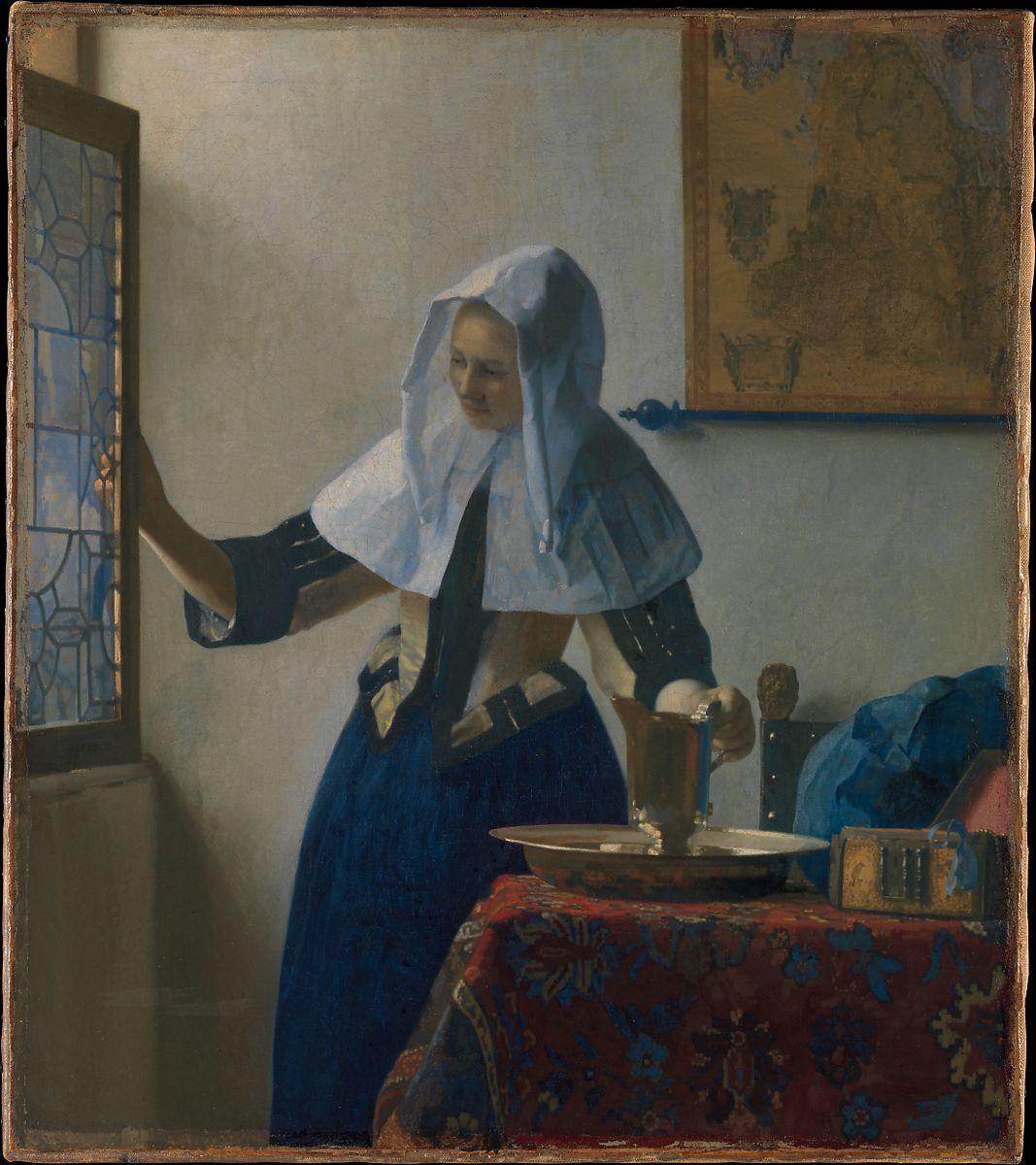
Johannes Vermeer, Young Woman with a Water Pitcher, c. 1662. Oil on canvas. 18 x 16 in. (45.7 x 40.6 cm)
In the 1660s, Vermeer experienced the height of his career. He became well known throughout his city of Delft and, in 1662, he was named the head of the painter’s guild.
A mere thirty-four (or thirty-six, depending on who you ask) Vermeer paintings remain extant. For context, the artist's contemporaries typically left behind hundreds of paintings. The Metropolitan Museum currently holds five Vermeers, the largest number in any one place. One such painting, Young Woman with a Water Pitcher, is especially exemplar of the artist’s stylistic hallmarks. Here, one can see Vermeer’s tendency to work in a limited palette—consisting primarily of red, yellow, and blue with some gray, brown, and ochre—and how such a limitation imbued his artworks with a striking sense of harmony.
Vermeer also tended to paint scenes of apparent tranquil simplicity, such as this one. Although his subjects appeared simple, one could easily argue that each painting he produced was a deeply thoughtful meditation on the human experience and a masterful example of perspective and composition. Vermeer exercised full control over the viewer’s experience with ease, populating scenes with items—such as chairs, windows, and even beams of light—that lead the viewer’s eye through the artwork and create an underlying sense of balance and nature.
Though some have argued that Vermeer used a seventeenth-century camera obscura to trace his artworks from life, this is highly unlikely. Rather, the artist probably drew inspiration from the striking visual effects of the device such as the manner in which its shallow depth of field shifted certain objects out of focus and created hazy highlights.
He mimicked these effects via a couple of techniques including the use of a neutral—often gray or ochre—ground layer, a strategic implementation of thin glazes, and the application of small dots of unmodified color to recreate the play of stark lighting of textured surfaces. The latter technique is easy to spot in The Milkmaid, especially in the rendering of bread in the foreground.
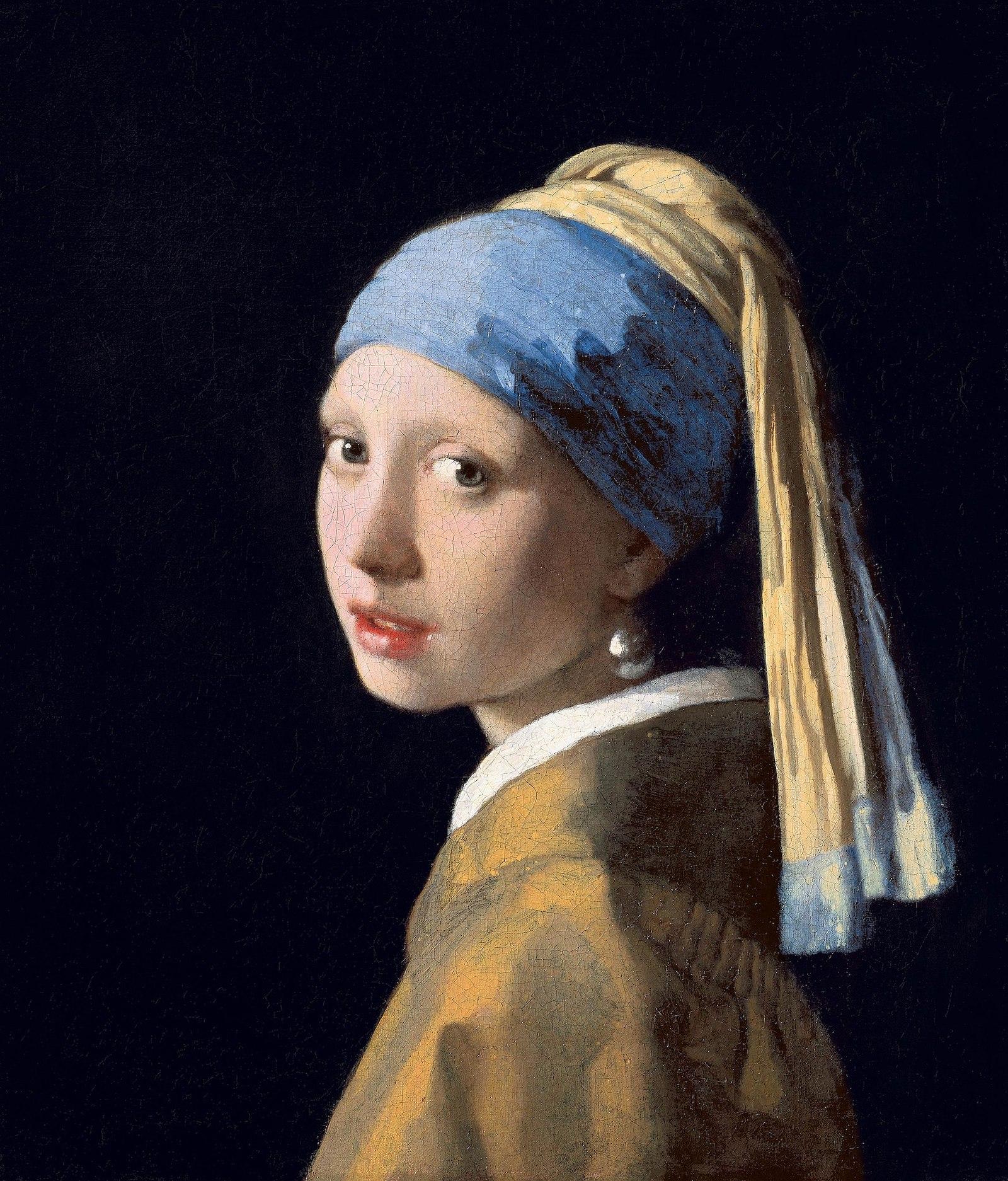
Johannes Vermeer, Girl with a Pearl Earring, c. 1665. Mauritshuis.
The 1665 painting The Girl with the Pearl Earring is easily Vermeer’s most recognizable masterpiece. Likely created as part of a series of paintings with a pearl motif, the gentle modeling of paint used to render the subject's face exemplifies the artist’s ability to sculpt form with light rather than line.
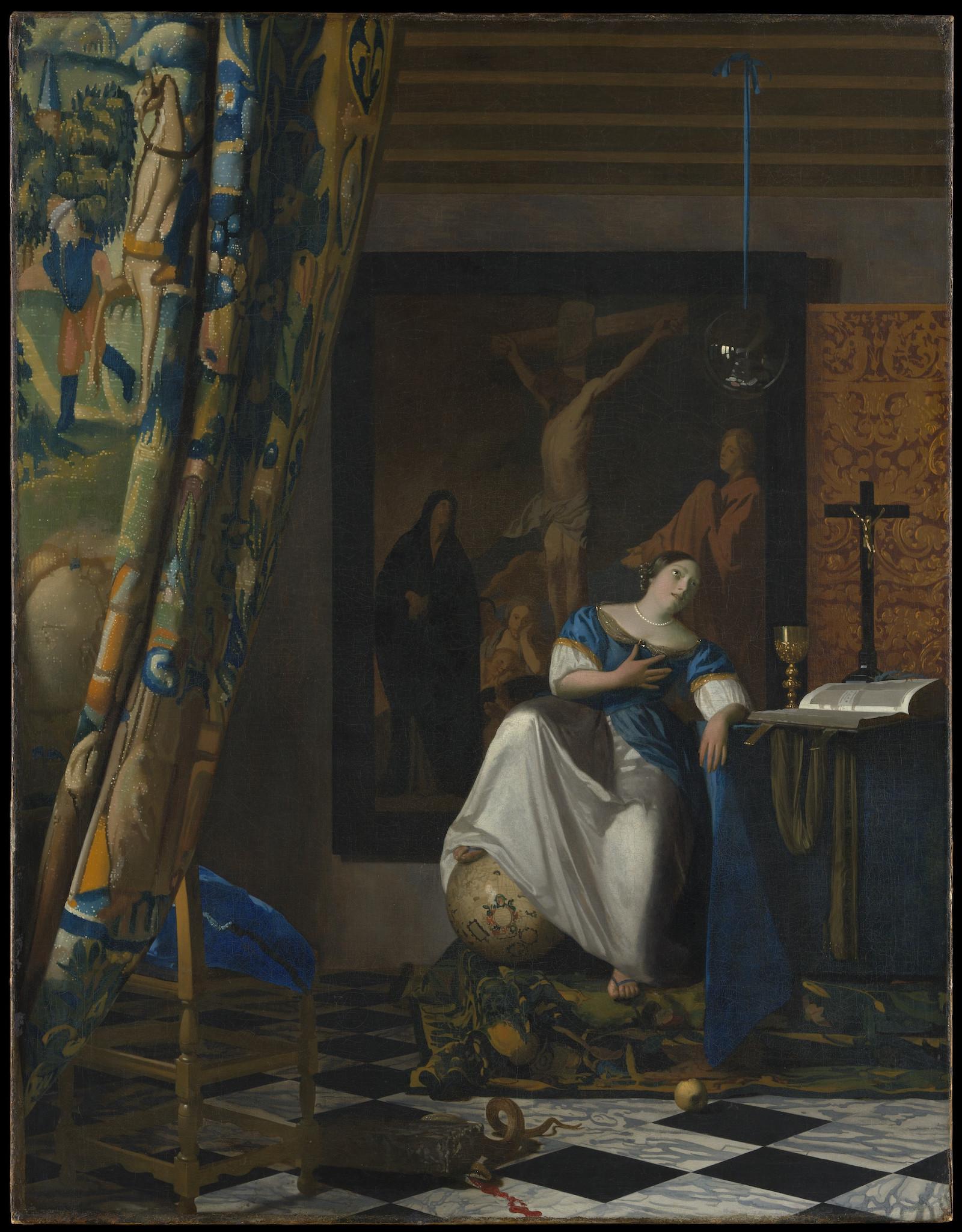
Johannes Vermeer, Allegory of the Catholic Faith, 1670–72. Oil on canvas. 45 x 35 in. (114.3 x 88.9 cm).
One of the artist's final works contemplated the Catholic faith and the persecution faced by its followers. Although Vermeer was born and raised Protestant, he converted to Catholicism in order to marry Catherina Bolnes in April of 1653. By the early 1670s, it was illegal within the Dutch Republic to publicly celebrate the Catholic mass. In response, Vermeer painted Allegory of the Catholic Faith. Objects in the background of the artwork allude to the private celebrations held by Dutch Catholics during this period, often within their own homes. The painting also wields allegory to fashion a visual beacon of hope for the eventual triumph of the Catholic church.
Although he produced relatively few paintings during his life, Vermeer's art can be found in museums all over the world today. During the 19th century, his masterly treatments of interiors began to be rediscovered by artists who took inspiration from him. This led to major collectors and museums acquiring his paintings. The Metropolitan Museum of Art currently holds five of Vermeer's paintings, more than any other museum in the world. While one of Vermeer's most famous non-interior paintings, View of Delft, can be found at the Mauritshuis in The Hague. Standing in front of a Vermeer is something every art lover should do in their life. Vermeer's compositions and the expert use of light in his work make him one of the most important artists in the early-modern period.




